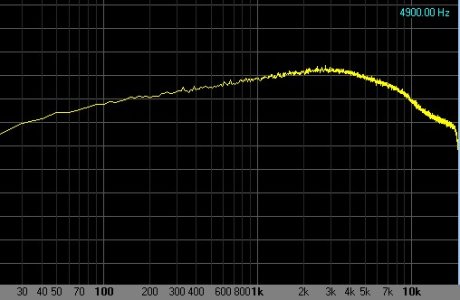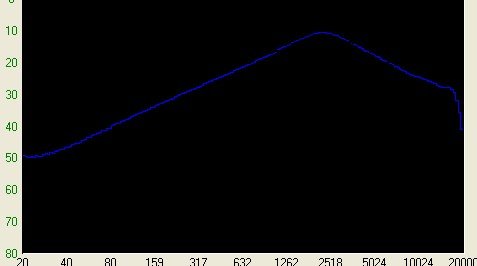Re: Gibson pups character to compare with Duncan or DiMarzio - any such resource?
i doubt a pickup company would ever do this but a 3rd party could. the trick is, what is their motivation? youd have to find some crazy guitar nerd with a lot of time, the right equipment, and either disposable income to buy all the pups or a large guitarist friend group in order to borrow the pups.
There's people doing such things. But the one who has put the most data online is also someone controversial, who has admitted to be partly driven by anger against pickups makers (not to mention that he has tried to teach how pickups work to... Frank Falbo, former Duncan designer).
Just running white noise to a speaker - coil close enough to a pickup, not even mounted - can tell a story about character. Make an estimate with three bars at some average, done. As the guitar is not part of generating the sound, rather neutral.
Hello,
Doing what you mention, all you'd obtain is the transfer function of the pickup as a LRC (inductive / resistive / capacitive) filter.
Here is the raw response of a Gibson 500T excited by some pink noise:

And here is the raw resonant peak of a (nickel covered) BBpro excited by a swept mono signal, through another testing rig / software:

Such curves
alone (or left unexplained) don't say much about "BMT": they just make obvious the resonance of the coils associated to a defined resistive and capacitive load...
It gives a rough idea of how each pickup would deal with harmonics (IOW: with treble frequencies)... but it doesn't show how much bass each pickup would produce. To find that, it would be necessary to know the Gauss level of their mags.
Granted, we could guess their perceived midrange by taking in account the Q factor of the resonant peak AND the Gauss level of their mags... high Q factor AND more gaussed magnet = apparently "scooped" midrange. That's why a BBpro sounds so caricatural: its A5 mag is 33% more charged than the A5 mag of any Duncan HB...
BUT the output level of the pickups couldn't be deduced from there, nor their dynamic behavior (linked to eddy currents). And so on...
Anyway, the sound of a pickup changes not only along the history of the product or according to the guitar hosting it but in the SAME guitar, it will ALSO change according to...
-the presence of a cover or not;
-its height settings... AND the height settings of the other pickup(s) in their way to interact with vibrating strings / magnetic neighborhood (!!!);
-the composition of the strings used;
-the resistance of the volume / tone pot(s);
-the overall stray capacitance of inner wiring AND cable from guitar to first buferred input;
-the input impedance of the effect or amp input...
This complexity is really hard to simplify for anyone and dealing with it seems irritating for many users: when I post screenshots like those above, there's sometimes someone to claim that my charts are BS / irrelevant / useless... and it's true to some extent since "simple" LRC specs are engrained in a mind-boggling series of interactive parms. A resonant peak tells something important about the voicing but still reveals a really small part of the overall tonal picture.
So, the best way to compare pickups is still... to try them directly. AFAIK, IMHO & IME at least.

Sorry for the lenght of this answer: being jailed at home gives me more time to post...

)


